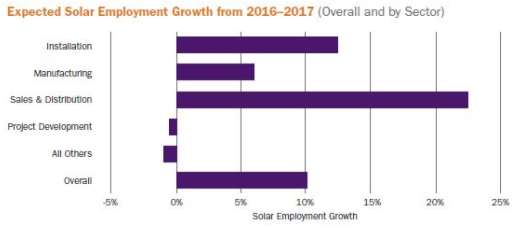On Monday January 22, 2018, the Trump administration brought in a 30% tax on imported solar panels. This new solar tax will last four years and decrease over time to 15% in its last year.
“Over the last 5 years, nearly 30 American solar manufacturers collapsed; today the President is sending a message that American innovation and manufacturing will not be bullied out of existence without a fight… This is a step forward for this high-tech solar manufacturing industry we pioneered right here in America.”
pressreleasepoint.com/trump-imposes-tariffs-solar-panels
PUNISH CHINA?
Of the few that have heard of this new tariff, the common misconception is that it is an attempt to punish China from dumping (selling below cost, to kill competitors) panels but the US only imports 10% of its solar panels from China (see the last 30 seconds of the video below). As you can see in the video below, the US solar industry did not ask for and does not want this tariff.
PROMOTE COAL?
Others, with even more partisan views, believe the tax is intended to bolster the US coal industry and reduce the attractiveness of solar. That also seems unlikely as the the solar industry already employs more than double the number of coal employees and the renewable energy industry employs about 5 times as many as the coal industry.
While Trump seems to be more and aware of the scale of the renewable energy industry as time goes on, his base supporters however seem to be completely unaware of this fact. It is most likely that they don’t want to know. Solar is an upscale urban employer whereas coal is downscale, small town, rural employer.
Coal jobs continue to stagnate as a temporary increase is demand, caused mostly be metallurgical coal (not coal used in the production of electricity), due to continued increases in automation.
Solar employment continues to grown at 10% per year and those jobs pay good money averaging about $29/hour.
Respected non-partisan research firms like Wood Mackenzie estimate that this tariff will slow the solar industry by about 10% in 2018 and 2019. This would mean that the growth of solar would flat line for these years before increasing again in 2020 as continued technological efficiencies, surpass the reducing tariff.
AMERICA FIRST… AND LAST
A less partisan view of the decision is that this 30% tariff is an ill timed attempt to simply promote US jobs writ large.
The Washington Post explains that this decision is solely that of the Presidents:
The safeguard process leaves the final decision on whether to impose trade remedies to the president rather than to the apolitical trade experts who normally adjudicate trade disputes.
Until now, American companies typically have shied away from requesting safeguard help, fearing that presidents of both parties who favored globalization would reject their pleas, said Bown.
But Trump has changed that calculus. “The signal is: If you have any credible claim, now’s a good time to bring it,” said an industry executive who spoke on the condition of anonymity because he was not authorized to speak publicly.
This type of protectionism kills jobs, increases costs, decreases the standard of living, but makes for great politics.




0 Comments